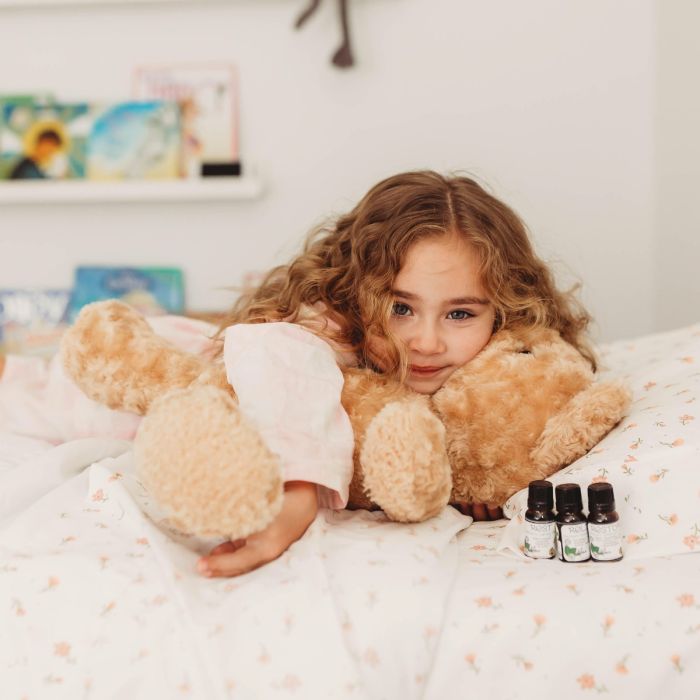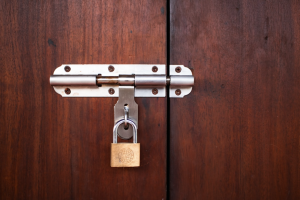How to Take Care of a Teddy Bear Toy

A Steiff teddy bear is not merely a plush toy but rather a lovely, mushy friend, an imaginary companion during childhood, and perhaps one of the cradles kept as a treasure. Gifting to a child or receiving one from a beloved person, caring about how to take care of a teddy bear toy makes it fluffier, cleaner, and in new condition long into the future. From washing methodologies to emotional bonding, this guide covers it all.
Know Your Bear: Materials and Age Matter
Every teddy bear is unique, and the way you care for it should be too. Different materials and ages need different attention. Here’s how to start:
Material Types
- Plush: Common and durable, easy to hand wash.
- Mohair: Found in vintage bears, very delicate.
- Felt: Often used in handmade bears, not water-friendly.
Age Matters
- Modern bears: Usually machine-safe (check label).
- Vintage/antique bears: Require gentle, hands-on care.
Source Insight
- Handmade bears may have fragile stitching.
- Store-bought ones are often sturdier and washable.
Cleaning Chart Based on Type
|
Bear Type |
Best Cleaning Method |
Notes |
|
Plush (Modern) |
Machine or hand wash |
Use a gentle cycle and pillowcase |
|
Mohair (Vintage) |
Hand wash or dry clean |
No heat or spinning |
|
Felt (Handmade) |
Spot clean only |
Avoid full immersion |
"Understanding the material is the first step in proper teddy bear care."
Cleaning Your Teddy Bear Safely and Gently
Teddy bears get dirty over time, whether from everyday cuddles or sitting on a shelf. Cleaning them does not entail compromising their safety. Here is the way to wash them while ensuring their softness and cuddliness.
Handwashing Tips for Delicate Bears
"Handwashing is the safest method when it comes to cleaning teddy bear toys made from delicate fabrics."
Step-by-Step Instructions:
- Prepare a basin with lukewarm water. Add either a mild detergent or baby shampoo.
- Dampen a soft cloth or sponge in the water; never submerge the bear directly.
- Gently wipe the bear's surface in small sections.
- Wipe the bear lightly and then rinse off any soap using another damp cloth.
- With a towel, blot up excess moisture gently.
Avoid:
- Hot water
- Bleach or harsh cleaners
- Soaking the whole bear (especially with glued parts)
Can you machine wash a teddy bear?
"If you are wondering whether you can clean a teddy bear in a machine, the answer depends on its materials and condition."
You can machine wash a teddy bear if:
- It has no electronic parts
- The stitching is secure
- The label says it’s safe
How to do it safely (Pillowcase Method):
- Insert the bear into a zippered pillowcase.
- With a gentle setting, wash in cold water.
- Use a small amount of gentle detergent.
- Skip the spin cycle if possible.
Spot Cleaning for Quick Fixes
"Regular spot cleaning is one of the simple things to do with your teddy bear at home to keep it fresh and lovable."
Steps:
- Dampen a cloth and put in a drop of mild soap.
- Gently blot the stained area (never scrub).
- Blot dry with a clean towel.
- Great for weekly wipe-downs or post-snack mishaps.
Drying Without Damage
After cleaning, how you dry your teddy bear is just as important.
Tips:
-
Never use a dryer — air drying only.
-
Lay the bear flat on a towel in a well-ventilated area.
-
Avoid direct sunlight or heaters.
-
Flip the bear occasionally to ensure even drying.
"Lay your bear on a soft towel or stuffed bear bed to let it dry without ruining its shape or fluffiness."
Daily and Long-Term Maintenance
Taking care of your teddy bear regularly keeps it looking lovable and feeling huggable for years. This guide helps you maintain your stuffed friend without needing professional repair.
Brushing or Grooming Matted Fur
Fur tangles over time, especially when your teddy gets soft and cuddles.
- Use a soft-bristled brush or a baby hairbrush.
- Gently brush in the direction of the fur, avoiding pulling or tugging.
- For deeper mats, use a small comb and go slowly to prevent damage.
- Brushing regularly keeps the bear soft and fresh.
Fluffing Stuffing or Fixing Lumpy Areas
Stuffing can shift and get lumpy, especially after long cuddles or washes.
- Gently knead and massage the bear to even out the filling.
- If a section feels flat, open the seam slightly and add soft stuffing.
- Use polyester fiberfill for best results it's washable and fluffy.
- Stitch it back carefully to match the original seam.
Sewing Small Tears or Replacing Eyes/Noses
Small damages are common with old or loved teddy bears.
- Use a matching thread and a fine needle to repair tiny tears.
- For missing eyes or noses, find replacement pieces online or in craft stores.
- If you need to reconnect features, use a strong thread or strong glue meant for toys.
- Make sure that all parts are tight, especially with children's toys.
To Avoid Damage from the Sun and Fading
Over the years, sunlight will gradually fade the fabric and cause stitching to deteriorate.
- Keep teddy bears out of direct sunlight when not in use.
- Store in shaded shelves or inside a breathable cloth bag.
- Rotate their position if they’re on display to prevent uneven fading.
- For vintage bears, avoid UV exposure completely.
Storage & Display Tips to Protect Your Bear
Your teddy bear is either your daily cuddle buddy, a childhood memory, or a valuable collectible; hence, unless properly stored and displayed, its safety and cleanliness-and your love for it-will become a question of concern over the years.
Dust-Free Storage Methods
Dust can dull your bear’s fur and cause sneezing fits if you are sensitive. To keep your bear clean:
- Store it in a cotton or muslin bag — these materials are breathable.
- Use sealed plastic bins only if there’s a moisture control pack inside.
- Whether the bear is being placed in a closed cabinet or on an elevated shelf, it should be away from pedestrian traffic.
Pro Tip: Lightly vacuum the storage space before placing the bear in the cabinet.
Display Options for Collectors or Sentimental Items
If you are showing off a beloved bear, keep these things in mind:
- Use a glass cabinet to keep out dust and curious fingers.
- Avoid direct sunlight — it can cause fading.
- Use small doll stands or cushions to maintain the bear’s shape.
Bonus: Label each bear with a tag for fun facts or memories!
Avoiding Mold and Mildew in Humid Climates
Humidity is a teddy bear’s worst enemy. Here's how to protect against mold:
- Use moisture-absorbing packets (like silica gel) in storage bins.
- Never store a bear that’s even slightly damp.
- Air out the bears monthly if stored in humid rooms.
If you notice a musty smell, air dry the bear in shade and use baking soda to remove odors.
Safe Storage for Kids' Toys vs. Heirlooms
Storage needs differ based on how the bear is used:
For kids’ toys:
- Use fabric bins or low, open shelves for easy access.
- Choose soft baskets — avoid heavy lids that can pinch fingers.
For heirlooms or collector items:
- Store in acid-free boxes or zippered display cases.
- Add a note or tag with its story or origin.
Keep valuable or fragile bears out of reach from young kids and pets.
Special Situations and Advanced Care
Caring for vintage, antique, or valuable teddy bears requires extra attention. Whether dealing with pests or major wear, special care can ensure your bear’s longevity and preserve its value.
Caring for Vintage or Antique Teddy Bears
Teddy bears that are vintage or antique are symbols that demand special attention:
- Handle these bears with the maximum softness possible. Pulling and tugging on any part of their limbs or body should be avoided.
- Hand Washing: Try not to machine wash because it is too harsh on delicate fabrics; they usually prefer cleaning by hand.
- Repairs: It should be repaired with a simple basic stitch with stitching copy near the original color.
- Storage: it should be in a space where the climate is regulated and low humidity so as not to wear it down.
Pro Tip: Do not remove any stains from antique bears unless you are skilled in textile restoration.
Dealing with Moth or Insect Infestation
Moths and insects can ruin your teddy bear’s delicate fabric. To prevent infestations:
- Regular inspection: Check for holes or signs of pests every few months.
- Preventive measures: Store bears with lavender sachets, cedar chips, or mothballs to deter insects.
- If infestation occurs: Gently freeze the bear for 48 hours to kill larvae and eggs, then clean thoroughly.
Warning: Avoid using chemical insecticides, as they can damage your teddy bear’s fabric.
When to Contact a Toy Restoration Professional
Some teddy bears require professional care, especially when:
- They have significant damage, like torn fabric or missing eyes.
- The bear has a complex construction that makes DIY repairs tricky.
- The bear is of high value (vintage, limited edition, or sentimental).
Professional restoration can involve:
- Fabric replacement
- Repainting eyes or noses
- Re-stuffing with appropriate materials
Pro Tip: Research well-reviewed, certified restoration professionals who specialize in vintage toys.
Emotional Care: Keeping the Bond Alive
A teddy bear is more than just a cuddly toy. It is a comforting companion full of memories. Be it your child's first bear, a precious gift, or a family teddy handed down through the generations, emotional care ensures that the bond remains alive.
For Children: Helping Them Care for Their Own Teddy
Children forge special bonds with their teddy bears to nurture; here is how to help care for their favored bears:
- Teach the care: Let your child know what should be done to care for his teddy. This allows him to feel responsible for its well-being.
- Integrate into the routine: Make bedtime fun with a little ritual where the bear is neatly tucked in while encouraging your little one to handle the bear gently and thoughtfully.
- Talk about how special the bear is: Tell your child about why the bear is considered so special and can be comforting during hard moments.
Pro Tip: A delightful "Teddy Bear Care Card" approach guarantees a fun way for kids to remember care routines.
Keeping Mementos and Memory Bears for Adults
For most adults, teddy bears have sentimental value-be it a lifelong companion since childhood or just a specific time in life. Here is how you can keep your bear:
- Keep it clean and fresh: Gentle cleaning techniques must be adopted for your bear to stay in good form.
- Keep it on display: If you have a dear possession, then show it off on special shelving or in a box that keeps it from harm.
- Fix it if needed: When your teddy has started showing signs of wear and tear, consider getting it professionally restored or reupholstered to preserve memories.
Hint: Add a note to the bear for dower; in it, share the story behind it so that it is a piece of history.
Passing Teddy Bears to the Next Generation
Transferring a teddy bear from one generation to another can be one of the most beautiful and emotional things a person can do. Here is how a transfer can be made even more special:
- Something personal: Attach a letter or some small keepsake, or even a family heirloom, for attaching more meaning to the event.
- Make a new tradition: Every time the bear is passed down, create a tradition that that generation will attach something personal, such as a button, tag, or even small piece of fabric.
- Tell: Share the history of the bear with the next person by letting them know why this item is so important and what it has been through.
Heartfelt tip: Perhaps a small ceremony can be set up to pass on the teddy bear to the third generation, thus immortalizing the moment.
Optional Add-Ons/Bonus Sections
- Checklist: Weekly & Monthly Bear Care Routines
Regular care keeps your teddy in tip-top shape, and having a simple routine can make a huge difference. Here’s a checklist to keep your bear looking its best:
Weekly:
-
At the following step, I used a soft damp cloth and used gentle wipes for his adored creature.
-
Check for any loose stitching or tears.
-
Fluff up the stuffing to keep the bear’s shape.
Monthly:
- Inspect for any wear or damage, like missing buttons or fraying fabric.
- Give the teddy a light cleaning (handwash or spot clean).
- Rotate the teddy bear’s position if it’s displayed on a shelf to avoid one-sided wear.
Pro Tip: Keep a calendar or reminder app to stay on track!
DIY Repair Kit: What to Keep Handy
Having a little repair kit on hand can be super helpful when small fixes are needed. Here's what you should include in your kit:
- Needles and thread (in matching colors)
- Fabric glue for quick fixes
- Stuffing to add volume if your teddy is losing its shape
- Small buttons or safety eyes in case replacements are needed
- Darning needle for delicate repairs
Pro Tip: If you are not sure about doing the repairs yourself, there are many online guides to help, or you can seek out a professional!
Printable Teddy Bear “Care Card” (Fun for Kids)
A nice way for kids to learn to take care of their teddy bear interactively is a cute "Teddy Bear Care Card," which you can download and print for free. Here is how to use the card.
- Personalize it: Kids can fill in their bear’s name, favorite activities, and care tips.
- Interactive design: Make it colorful and engaging, with pictures of teddy bears doing different care activities.
- Sticker fun: Let your child stick on a fun "Teddy Care Champion" sticker every time they follow the care routine!
Fun Tip: You can make the care card a fun weekly activity — kids can look forward to checking off the tasks they’ve completed!
Conclusion:
How to take care of a teddy bear toy means an understanding of its charm and comfort, which should be well preserved for years. Proper washing methods, careful storage, and gentle handling keep the teddy bear safe and sound, ready to bring joy and warmth! Take care of your teddy, and it will always remain your very own!
FAQs: How to Take Care of a Teddy Bear Toy
- How often should I clean my teddy bear toy?
It is recommended to clean your teddy bear toy every few months or whenever it gets visibly dirty. However, if your teddy bear is frequently used, you may need to clean it more often. - Can I machine wash my teddy bear toy?
It depends on the material. Some teddy bears can be machine washed, but others may need to be hand washed or spot cleaned. Always check the care label before washing. - How do I remove stains from my teddy bear toy?
To remove stains, gently blot the affected area with a mild detergent and warm water. For tougher stains, use a fabric cleaner or stain remover that is safe for soft toys. - Can I dry my teddy bear in a dryer?
It is best to avoid putting your teddy bear in the dryer, as the heat can damage the fabric or stuffing. Instead, air dry it by laying it flat or hanging it up. - How should I store my teddy bear toy when not in use?
Store your teddy bear in a cool, dry place away from direct sunlight to prevent fading. Keep it in a clean, breathable bag or on a shelf to protect it from dust and damage. - What can I do if my teddy bear’s fur gets matted?
If your teddy bear’s fur becomes matted, gently brush it with a soft, wide-tooth comb or use your fingers to untangle the fibers. Be careful not to pull too hard to avoid damaging the fabric. - Can I repair a damaged teddy bear toy?
Yes, if your teddy bear has a small tear or loose stitching, you can carefully sew it back together. For more significant damage, consider seeking the help of a professional toy repair specialist.






